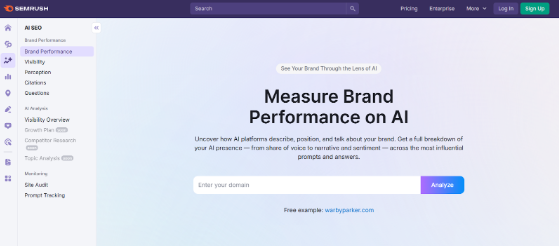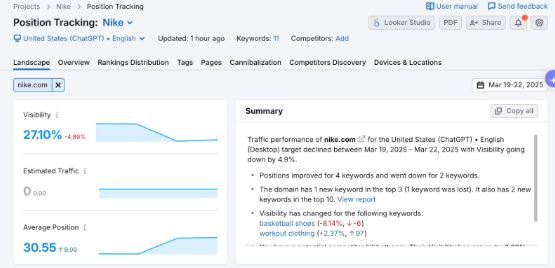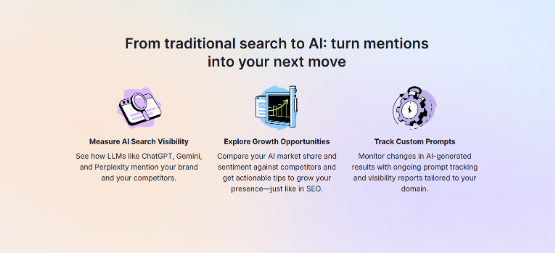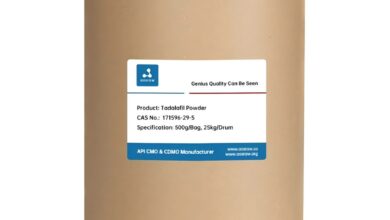How Semrush’s AI SEO Toolkit Elevates Your Brand Performance in the Age of AI Search

***This post is sponsored by Semrush. When you purchase through links in this article, we may earn an affiliate commission from Semrush.***
If you want your brand to stand out not just in traditional search results, but in AI-powered answers (ChatGPT, Google AI Mode, Perplexity, or similar), the Semrush AI SEO Toolkit is built for exactly that. Right now is the moment to take control of your AI visibility and brand perception.
Start improving your AI search visibility today with the Semrush AI SEO Toolkit.
What Is the AI SEO Toolkit & Why It Matters
Semrush’s AI SEO Toolkit goes beyond regular SEO metrics. It helps you understand how your brand is perceived and represented in AI-generated responses.

Key parts of the toolkit include:
- AI Visibility / Visibility Overview: You see how often your brand appears (or is missing) in AI-driven answers, compared to competitors.
- Brand Performance: A set of reports that uncover sentiment (positive / neutral / negative), attributes associated with your brand, topics AI connects to you, and where you might be underperforming.
- Monitoring / Prompt Tracking: Track specific AI prompts that are important for your brand, so you can see how visibility changes over time.
- AI Crawlability & Technical Audits: Identify technical barriers that might be preventing AI systems from citing your content or interpreting it correctly.
In short, this toolkit bridges the gap between traditional SEO, content strategy, and what’s happening in AI search. It helps you be seen and positively represented.
How Brand Performance Reporting Works

The Brand Performance module is especially powerful because it doesn’t just tell you if your brand shows up—it tells you how it shows up. Here are the key outputs and why they matter:
- Share of Voice: You can compare how frequently your brand appears in AI answers versus competitors. If your competitors are dominating visibility, even with lower quality in some cases, you might still be missing out.
- Sentiment Analysis: This shows whether the mentions are positive, neutral, or negative. AI-tools use descriptors, tone, and context to portray your brand. That perception matters, because users trust answers with favorable or neutral sentiment more.
- Attributes & Topics Associated with Your Brand: These reports reveal what topics users link to your brand in AI responses—product benefits, general reputation, innovation, trust, etc.—and also highlight topics where you’re missing.
- Citations: Where is your brand being cited? What pages are used by AI to support responses that mention you? Conversely, what content is cited for competitors? Understanding that helps with refining content and building authority.
- Prompt Gaps / Opportunities: By seeing which prompts you are not showing in, you can identify opportunities to create content or adjust messaging to capture those gaps.
Practical Steps to Improve Your Brand Performance

Using the AI SEO Toolkit is insightful—but it’s only impactful if you act on what you learn. Here are steps you can take based on the toolkit’s findings:
- If sentiment analysis reveals mixed or negative associations, consider refining your messaging, updating content to address concerns, or producing brand-story assets that positively shape perception.
- Use prompt tracking to monitor high-value AI queries. For example, if you see a prompt where users ask “What brand is best for X?” and you’re missing, create content (blogs, FAQ pages, landing pages) that positions you there.
- Improve crawlability: fix technical SEO issues flagged in audits (schema markup, page speed, internal links, ensuring that pages likely to be cited are accessible) so that AI systems can discover and trust your content.
- Monitor competitor brand performance: sometimes what you don’t do is as important as what you do. If competitors are strong in certain attributes or being cited from certain sources, see how you can match or surpass them.
- Use the Strategic Opportunities panel inside Semrush to prioritize what to fix first. That might be improving content around emerging themes, targeting certain AI-platforms, or amplifying content that already performs well.
Who Gains Most from This Toolkit
The AI SEO Toolkit is especially useful for:
- Brand managers seeking to safeguard or shape how their company is mentioned by AI systems.
- SEO and content marketing teams wanting to stay ahead as AI-powered search becomes a larger share of discovery.
- Businesses in competitive verticals where reputation, perception, and visibility in AI answers may influence purchase decisions.
- Anyone looking to future-proof their SEO strategy, not just optimizing for page ranking but for being present and well-represented in AI responses.
Bottom Line & Action Call
As AI-powered search becomes more central to how people get information, being invisible—or unfavorably described—in AI generated content is a risk. The Semrush AI SEO Toolkit gives you measurable, actionable insight into how you appear in that new landscape. It doesn’t just give you data; it gives you what to do with it.
Take charge of your AI search presence now with the Semrush AI SEO Toolkit. See how your brand measures up and start shaping how it’s perceived in AI-generated answers.



